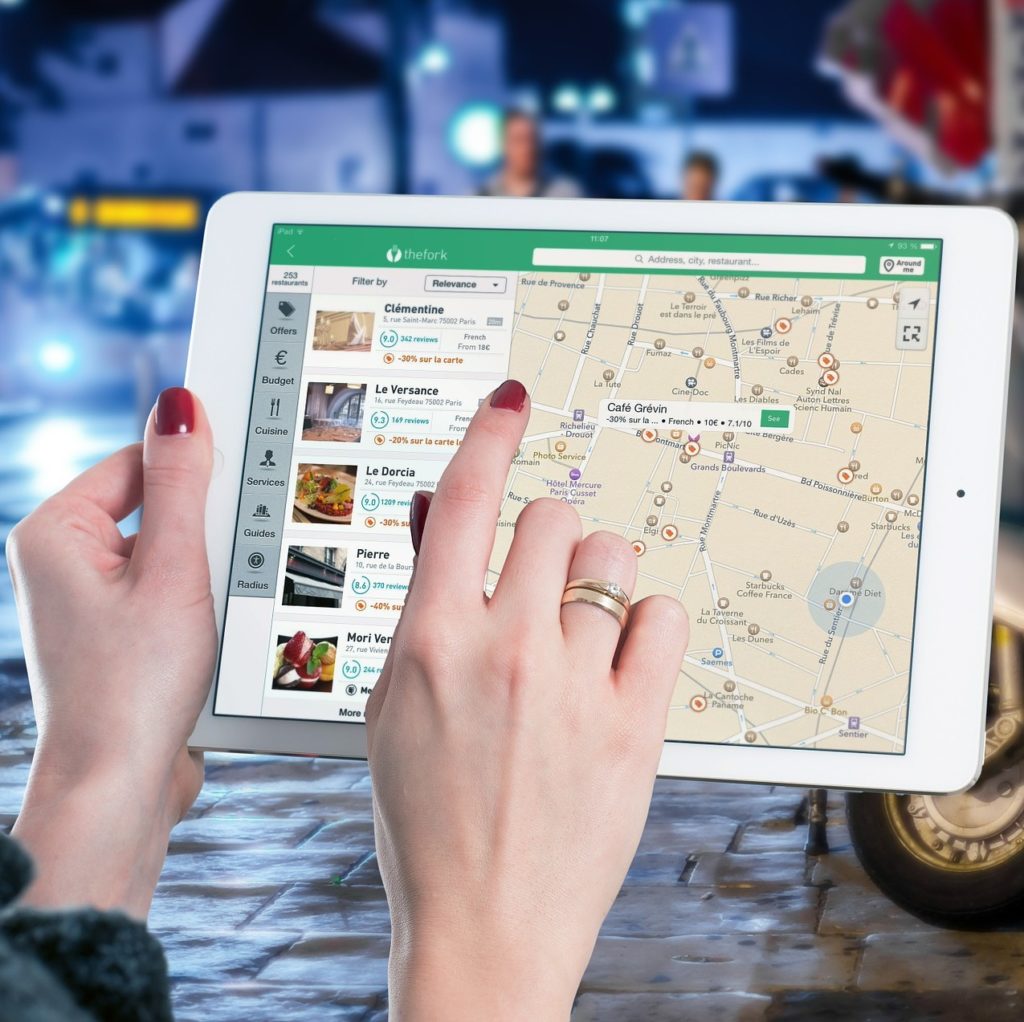New Technology & Location Data Has Changed the OOH Industry: Q&A with Kym Frank, Geopath
by on 30th Oct 2017 in News

Out-of-home (OOH) advertising is an old medium, but as it evolves within the digital world, advertisers, agencies, and media owners need to be sure OOH inventory is independently audited and measured. Kym Frank (pictured below), president, Geopath, talks about the role they play within the industry, how the use of location data has changed the OOH landscape, and the future this channel holds for advertisers.
ExchangeWire: With a history of measuring OOH advertising inventory, how has Geopath evolved as a company in the industry today?
Kym Frank: Geopath is a truly unique organisation in the United States. Formerly known as the 'Traffic Audit Bureau', Geopath was founded in 1933. We are a not-for-profit that is governed by a tripartite board of directors, made up of advertisers, agencies, and media owners. The primary focus of the organisation is to provide unbiased auditing and measurement of out-of-home (OOH) advertising. Buyers and sellers both participate in our committees, share the combined cost of supporting the solutions we provide, and play vital roles in determining the priorities of our organisation, the capabilities of our measurement system, and our funding model.
In 2016, the organisation continued its evolution under the new brand name, 'Geopath'. We migrated our focus from only measuring OOH inventory to measuring the way that aggregated anonymous audiences move throughout the United States. Our members have always been the experts in OOH locations. We want to empower them to also be experts in audience location.
As the need for responsible, independent, and transparent measurement in the online ecosystem was making headlines, the OOH industry took it upon themselves to make an investment in a new, state-of-the-art currency. Fueled by mobile data, and data from connected cars, the new currency provided by Geopath will provide robust, granular measurement in markets large and small across the country. Buyers and sellers work hand-in-hand to create a robust and trustworthy measurement system on behalf of their own industry and ensure that our industry is being fairly and accurately measured on behalf of our advertisers.
What types of organisations have traditionally been involved with Geopath, and how is that changing?
Throughout the history of our organisation, our primary membership has consisted of OOH media owners, agencies, and several large advertisers. With the rebrand and new measurement system, the enthusiasm around our organisation has grown – and so have the types of organisations that are interested in being a part of it!
I have had an unprecedented number of phone calls from large national advertisers who are interested in getting access to our data for use in their own data-management platforms. We’ve received inquiries from several programmatic platforms – many of which have been primarily focused in the online space in the past, but are seeing the growing value of incorporating OOH inventory into their systems. Additionally, many tech companies are reaching out who are interested in getting into the smart city space via an ad-funded business model.
What kinds of data can be collected with OOH, and in turn, how is the attribution of that data able to be used to help win over advertisers and marketers?
The proliferation of various types of location data and new technologies has moved the OOH industry into new opportunities we’ve never had before – not the least of which is being one of the best-measured media channels available to advertisers! From cell tower triangulation to Wi-Fi, GPS to beacons, not to mention the availability of anonymous sensors – the availability of data has skyrocketed – but each have their own strengths and weaknesses. All data partners and technologies we utilise at Geopath are vetted by committee, cleansed by our data partners, and then validated by a third party.
Utilising the data we have available, we are able to measure OOH advertising exposure in granular time increments. We released data by the hour in the spring – which was the first time our membership was exposed to hourly population-level impressions. Additionally, we are incorporating more than 6000 different audience segments to help make OOH plans more targeted.
We also ensure that we are well within privacy guidelines, and advise our members to do the same. Just because you can do something with data, it doesn’t mean you should!
How are advertisers now able to effectively analyse audience location data and understand how consumers engage with OOH advertising in ways that they couldn’t before?
This abundance of data has enabled the medium to demonstrate audience engagement and even campaign effectiveness in a variety of ways.
Most advertising platforms utilise an 'opportunity to see' impression model. This means that, if the ad is presented to a human, and that human has an opportunity to see it, they are counted as an impression. This doesn’t take into account whether that person actually made eye contact with the ad or consumed the ad.
In OOH, just driving or walking by an advertisement does not constitute an impression. Geopath audited inventory are held to stricter guidelines and utilise a 'likelihood to see impression'. Utilising eye-tracking studies, the organisation developed a list of factors that determine the probability that someone will actually look at an advertisement. These include factors such as the size of a piece of inventory and its angle to traffic. We also account for factors such as speed of movement and dwell time when measuring impressions.

Kym Frank, President, Geopath
Sensor technology is used by many OOH media companies to gauge audience engagement with advertising. These devices utilise anonymous facial detection to determine the likely age and gender of people in front of the advertising, how long they made eye contact with the copy, and in some cases, their mood. Additionally, through computer learning, this technology can be taught to recognise other visual cues, such as brands. It has often been used to recognise car models that drive by digital roadside inventory so that the copy can be dynamically changed for those drivers.
Mobile location data has certainly empowered OOH to gauge campaign effectiveness in ways that would provide a challenge for many other advertising platforms. By geofencing inventory, advertisers can identify the devices that were exposed (or not exposed) to the advertising, and then determine whether those devices entered retail locations. Through device history, advertisers are even able to see if those devices have visited the retail locations in the past, if they are frequenters of competitors’ locations, or if this was a first-time visit.
What have been the biggest changes in digital OOH to date, and what are some of the challenges that still need to be addressed for true success?
In the past, the industry was considered hard to 'plan, buy, and measure'. We’ve recognised these pain points and are working with our members to overcome these challenges. Certainly, the investment that the industry has made in our new measurement system is going to pave the way for making planning easier, smarter, and more targeted. There’s no doubt that the measurement will be more sensitive, transparent, competitive, and straightforward. The tools we are providing to the industry are also easier to use than the legacy platforms.
From a buying perspective, many of our members are releasing platforms designed to simplify the buying process. Some of these platforms are being designed for a single operator’s inventory. Others provide a national footprint. And this isn’t just for digital inventory. The entire process of buying a printed advertisement, from placing the buy, to getting the creative delivered and up on the frame, and even delivery of the proof of performance photos is all automated now.
Where do you see the future of OOH going in 1-2 years versus 5-10 years?
In the next few years, I expect more cities to invest in ad-supported smart city programmes that provide information and value to their residents and visitors, while providing important services to the cities themselves.
On digital inventory, we will see more and more dynamic triggers being utilised to change creative, either based on external information (such as search queries, weather, or traffic patterns) or based on the profile of devices in proximity to the advertising.
Advertisers will continue to experiment with innovations, such as augmented and virtual reality, and provide more opportunities for audiences to interact directly with advertising, utilising technology such as NFC.
There is a significant presence of digital signage in venues across the country. I expect there to be a spike in the monetisation of advertising on these screens in the near future. And given its unique real estate footprint across the US, I believe that OOH advertising is in a unique place to integrate with emerging Internet of Things (IoT) devices and to communicate with the dashboards of cars.
Long term, I believe we will see the line between mobile and OOH advertising dissolve, with both channels working hand-in-hand to reach consumers who are on the go – 'where advertising'. This is already starting to happen, but I expect the integration of the two will become the norm. I also expect to see a relationship between wearables and OOH emerge.
OOH will continue to be big, beautiful, and unblockable – and, as a result, I believe investment in the medium can only go up.








Follow ExchangeWire